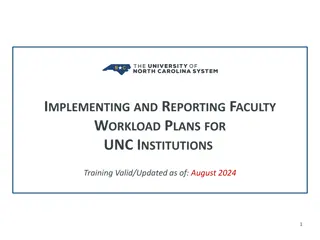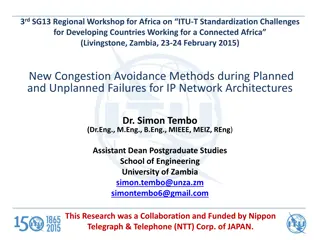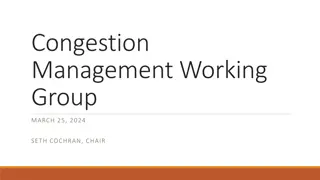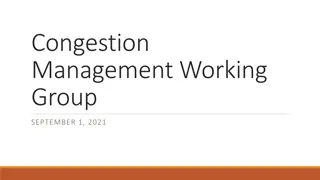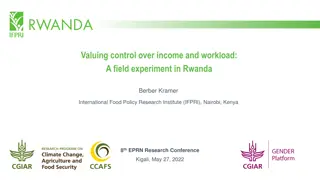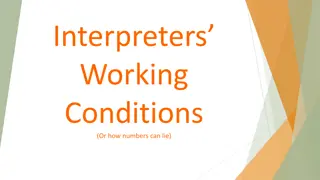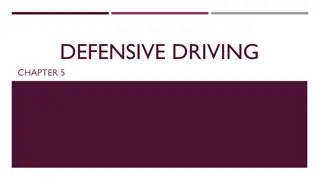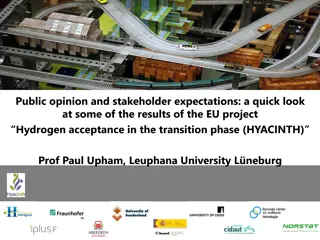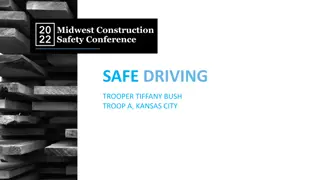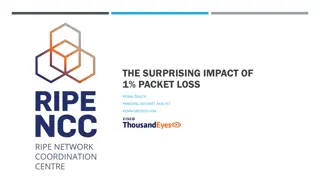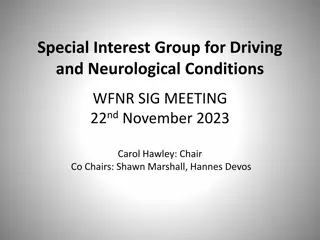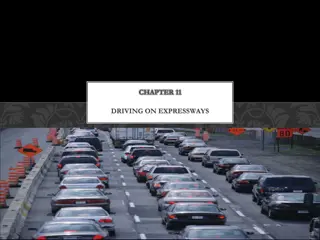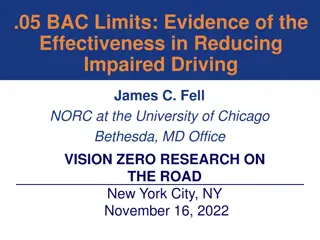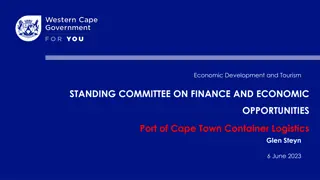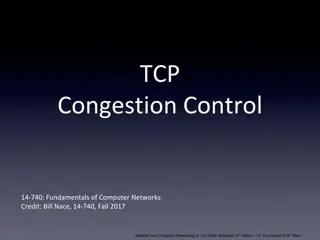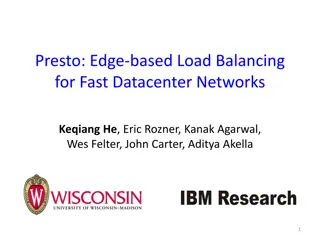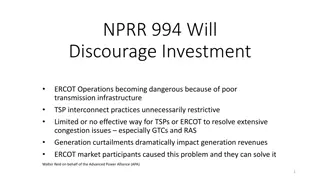Effects of Driving with a Congestion Assistant on Mental Workload and Acceptance
This study explores the impacts of using a Congestion Assistant system on drivers, combining features of a Congestion Warning System and a Stop & Go system. The research includes methods involving 37 volunteers driving in a simulator under different conditions, with or without the Congestion Assistant, during normal visibility and fog. The study analyzes the human-machine interfacing aspects and the overall experience of drivers using this assistance technology.
Download Presentation

Please find below an Image/Link to download the presentation.
The content on the website is provided AS IS for your information and personal use only. It may not be sold, licensed, or shared on other websites without obtaining consent from the author. Download presentation by click this link. If you encounter any issues during the download, it is possible that the publisher has removed the file from their server.
E N D
Presentation Transcript
Driving with a congestion assistant; Driving with a congestion assistant; mental workload and acceptance mental workload and acceptance Karel A. Brookhuis , Cornelie J.G. van Driel , Tineke Hof , Bart van Arem , Marika Hoedemaeker Applied Ergonomics
Abstract To gain understanding of the effects of driving with a Congestion Assistant on drivers A system that combines the features of a Congestion Warning System and a Stop & Go system
Introduction Operator support systems have been widespread in aviation for a long time already, while active operator support in surface transportation is introduced only quite recently Systems that have safety as primary objective are expected to gain considerable savings in casualties. The development and introduction of driver support systems in road traffic, although originally instigated by safety, has been pushed mainly by efficiency and comfort
Method 37 volunteers(7 females,30 males) Age between 23 and 60 years old Had driving license for 5 years or more Drove regularly
Apparatus and procedure The participants were invited to TNO for driving in the simulator during four runs of 15 km each This resulted in four conditions: 1 without Congestion Assistant during normal visibility 2 with Congestion Assistant during normal visibility 3 without Congestion Assistant during fog 4 with Congestion Assistant during fog
Apparatus and procedure The traffic jam itself had a length of 3 km, implying that the participants left the traffic jam after about 13 km from the start The Congestion Assistant supported the driver during the whole congested traffic situation. The functions of the Congestion Assistant were programmed to switch on or off at fixed points in each trial.
Human-Machine interfacing The interface consisted of visual, acoustic and haptic feedback. The display was positioned next to the steering wheel and consisted of three icons and a textbox. Upper icon: congestion warning and information Middle icon: active gas pedal Lower icon: Stop & Go
Mental workload measures The cardiac function that can be used to measure mental workload Generally, the higher the average heart rate and the lower the heart rate variability, the more mental effort has to be spent
Secondary Task The task (and instruction) is merely the detection of stimuli that were presented regularly in the periphery of the functional visual field. The idea behind it is that the functional visual field decreases with increasing workload in the primary task.
Self-report measures Self-report measures are used to measure the subjectively experienced mental effort. This method is based on the operator s rating of his performance. The Rating Scale Mental Effort is an example of a self-report measure. It is a one-dimensional scale, ranging from no effort to extreme effort
Acceptance of the Congestion Assistant was registered before the actual driving task started, based on functional description, and after each trial in the Congestion Assistant condition, using the acceptance scaling technique, resulting in a usefulness score and a satisfaction score.
Results -Heart rate and heart rate variability The results showed a significant main effect in HR of section (F(3,81) =13.9, p <0.001) and a significant interaction effect between system and section (F(3,81) =6.6, p< 0.001). A significant interaction effect between system and section was found for HRV (F(3,81) =4.3, p< 0.01). IBI and HR are reciprocal concepts, therefore a higher IBI score represents a lower HR score, meaning that the mental workload was lower in the traffic jam when one was driving with the Stop & Go function of the Congestion Assistant.
Results -Peripheral detection task Analyses were performed to investigate the effects of the Congestion Assistant on workload during normal visibility and in fog. The results with respect to the PDT reaction times showed a significant main effect of section (F(3,93) =12.3, p < 0.001) while an interaction effect between system and section was found as well (F(3,93) =9.6, p< 0.001)
Results -Peripheral detection task With respect to the percentage of missed PDT signals the results were similar, showing a significant main effect of section (F(3,93) =18.6, p < 0.001) and an interaction effect between system and section (F(3,93) =7.1, p <0.001) It appeared that when approaching the traffic jam (Section 2), the percentage of missed PDT signals with the Congestion Assistant was larger than without this system.
Results -Effort self-report The results showed significant main effects for both within subject factors visibility (F(1,33)=12.4, p <0.01) and system (F(1,33)=16.4, p < 0.001).
Results -Acceptance of the system The expectation that the Congestion Assistant would be accepted more in fog than during normal visibility was not clearly supported by the results.
Discussion and Conclusion The Congestion Assistant did not affect the experienced workload in the sense of indicated effort during normal visibility . The impacts of the acoustic warning function weren t found. The workload increased when driving with the active gas pedal and decreased when driving with the stop & Go It was found from the RSME data that the participants experienced driving during normal visibility as being less effortful than driving in fog
Discussion and Conclusion It is clear that the results obtained by the heart rate data do not always correspond to the results from the effort scale and also from the PDT The PDT may be more sensitive for visual workload The present combination of workload measures enables to form a differentiating picture of the driver s mental workload caused by the Congestion Assistant
Discussion and Conclusion The participants reported that they appreciated the Congestion Assistant. They thought it could increase traffic safety and efficiency, while it would assist them in some of the situations that were incorporated in the experiment. The results showed that the active gas pedal was least appreciated as feedback mechanism, while the mental workload was higher with the active gas pedal than without this function.




